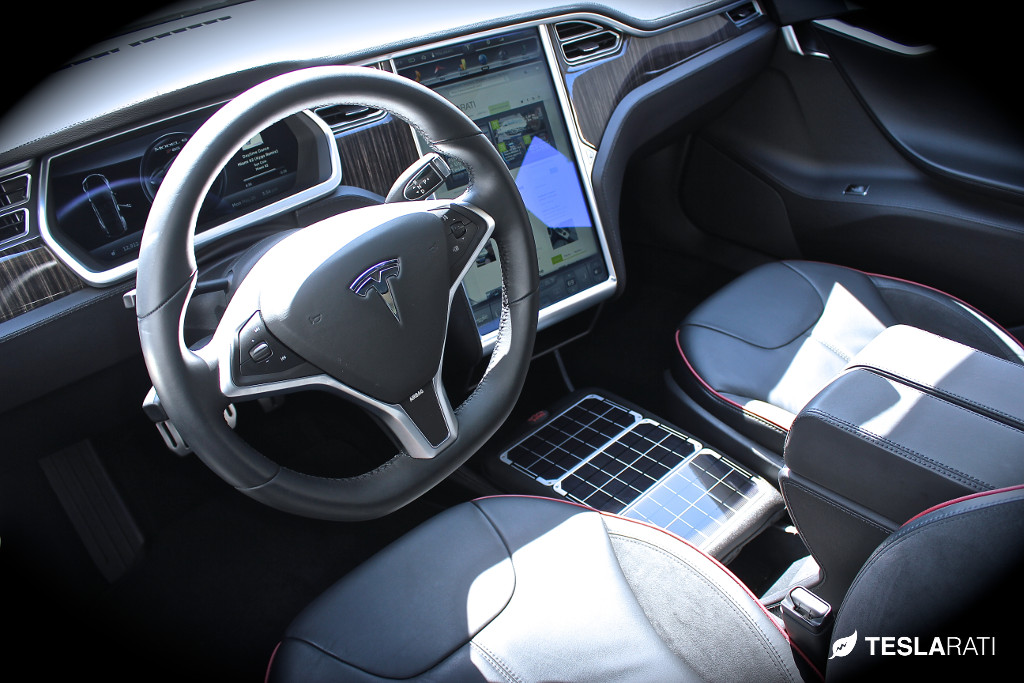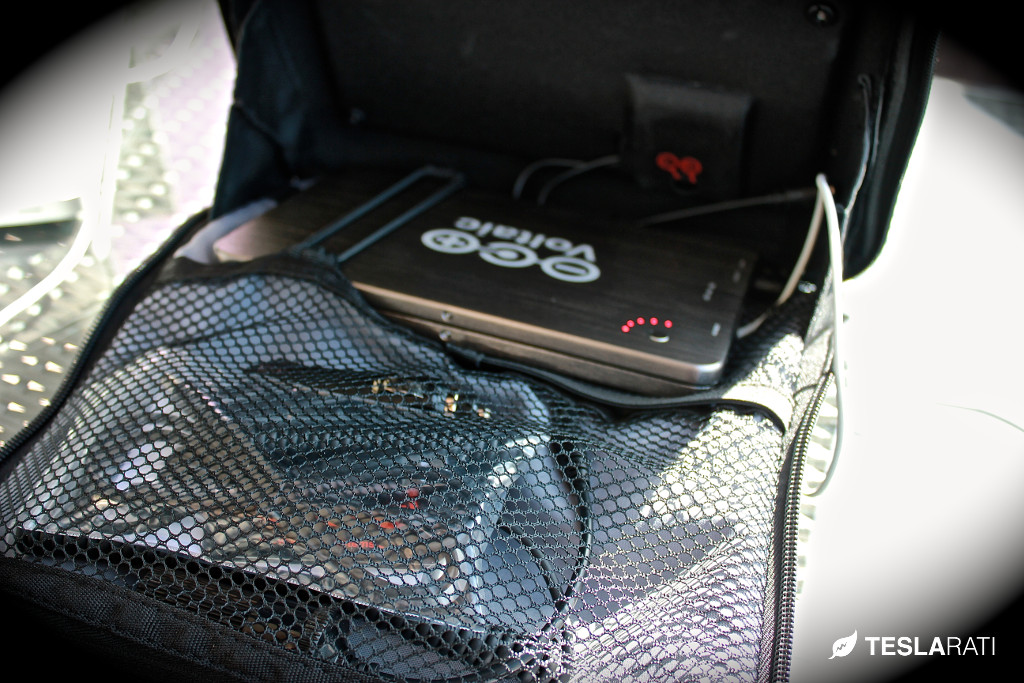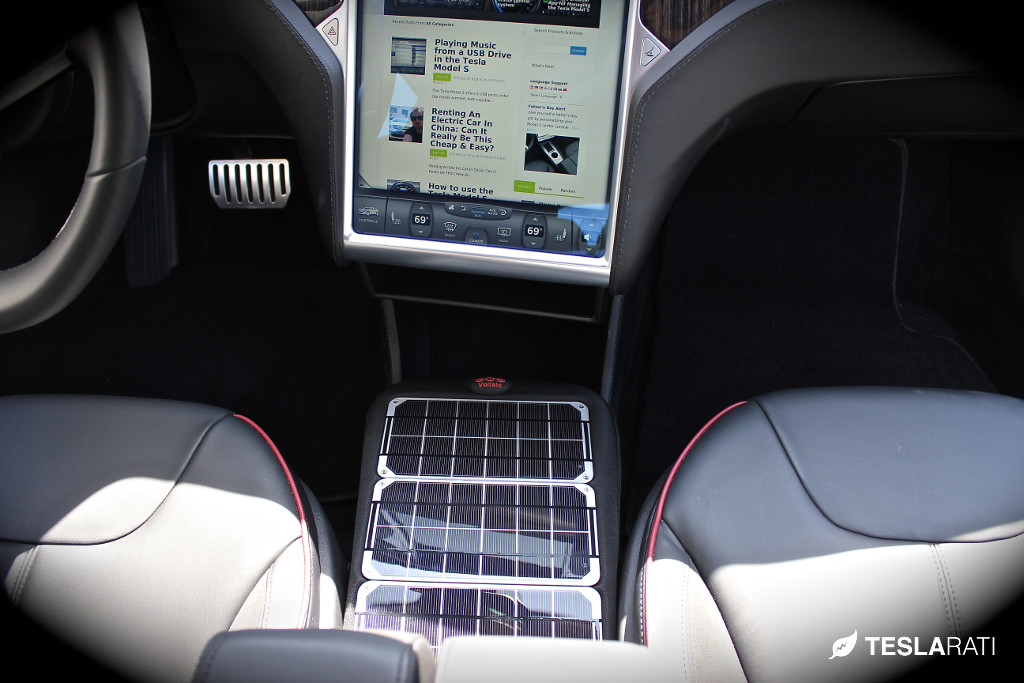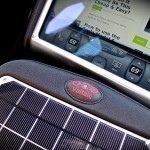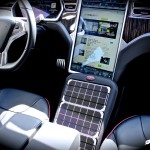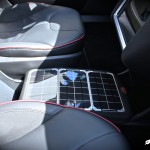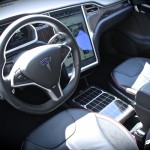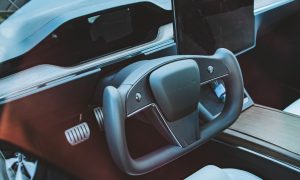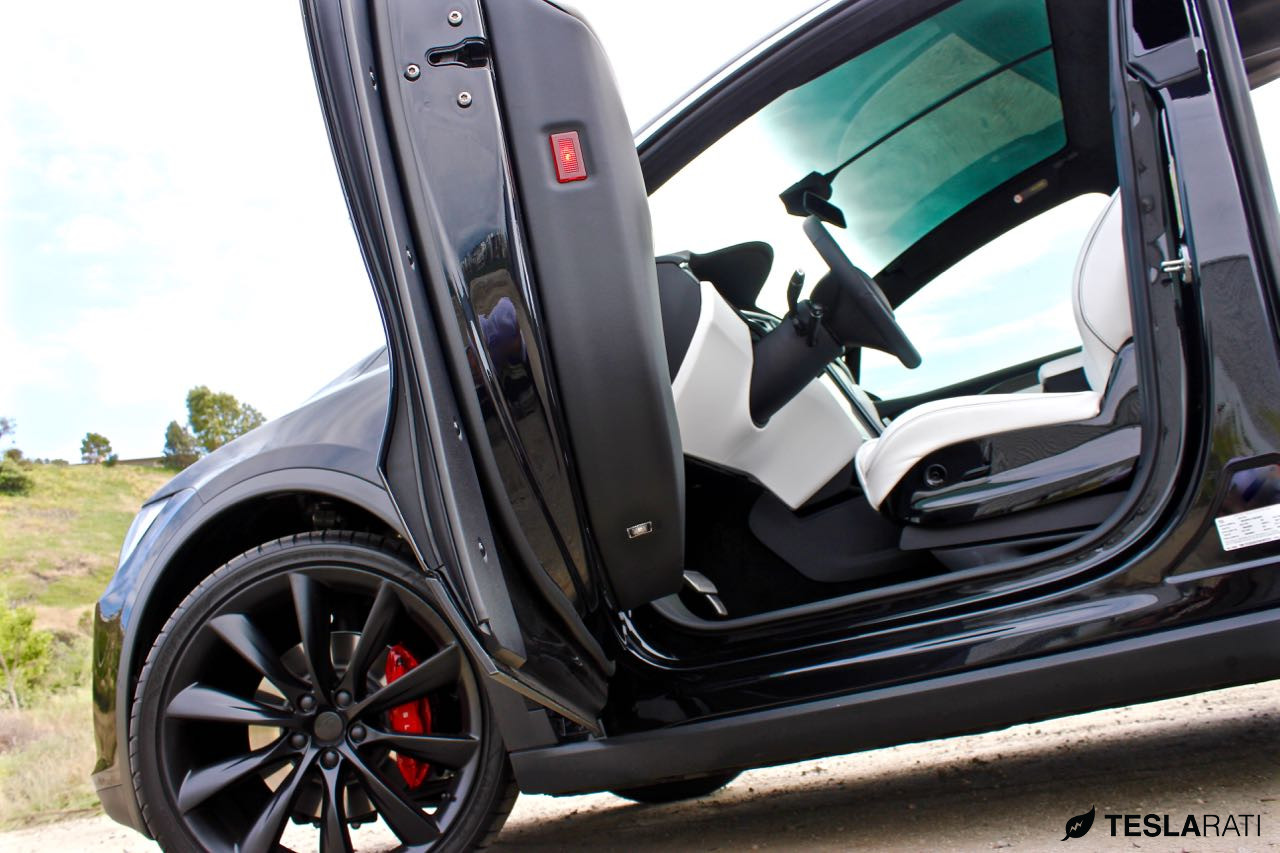Lifestyle
Integrating Portable Solar Panel Technology into the Tesla Model S
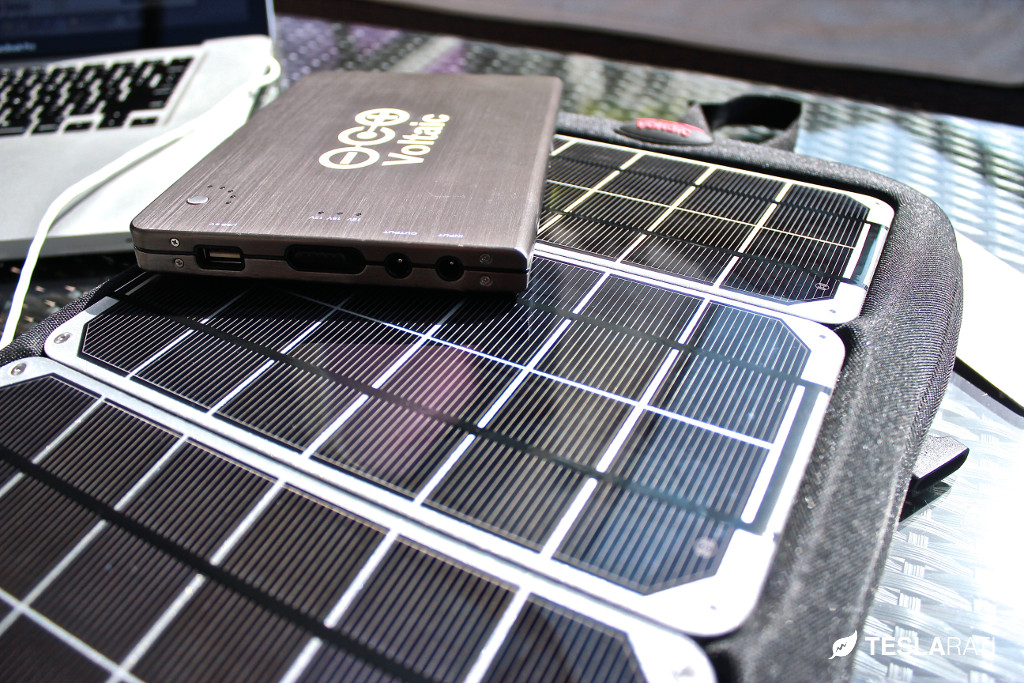
******************
UPDATE: 8/19/14 – After three months of continuous everyday use, both in-car and outdoors (predominantly left on the patio), the Voltaic 10W portable solar system has managed to power a household of two iPhones and one iPad purely on solar energy, and become a welcomed new member of the family.
It took some getting used to at first considering the entire assembly is as tall as a high schoolers backpack and more cumbersome to lug around than some of the smaller portable solar devices that I had a chance to test (Solar Joos, Anker). But despite the larger size, the Voltaic solar panel was hands down the best performing, most reliable and had superior quality over the others. In fact, it’s changed my entire perspective on how useful solar energy can actually be to the point I felt dirty just plugging anything into a wall (as ironic as that may sound from an EV family).
The Voltaic System portable solar panel device is certainly not the cheapest and some will argue that the cost for portability far exceeds what you would be paying if using a standard wall outlet, and they are right.
But for some it goes beyond just a cost benefit analysis. If you’re that type, then this device is for you. All in all, it’s a superb device in every sense and has made me become quite reliant on it. It’s hard to imagine adjusting back to using outlets for my mobile and tablet devices when each day brings free energy from the sun.
Read the original review below.
******************
Elon Musk has long touted that solar energy will be the future of electric vehicles so why wasn’t it incorporated into the Tesla Model S?
A part of me still wonders why this never happened. Perhaps it was a way to offset the large costs associated with having an automotive-grade lithium ion battery pack capable of 260+ miles of range. Or was it due to the fact that roof-integrated solar cells à la now defunct Fisker is nothing more than a cool factor with no real cost benefit?
Either way, it got me thinking – how can I store some of the sun’s energy while embarking on a long distance Tesla road trip? Or better yet, store solar energy while the Model S is at rest during the work week? The energy recouped through the sun need not be channeled back into the car itself, but could still provide usable power for a mobile device or laptop.
This exact thought led us to find three leading makers of portable solar charging technology with the goal of being able to store solar energy implicitly through our Tesla Model S. We’ll be conducting a review of each product in a three part series. The first being Voltaic System‘s Fuse 10W Solar Laptop Charger.
Initial Impressions
 Voltaic’s 10W Fuse Solar Charger dominates in its presence. The three large solar panels encased within a beautiful gloss coated metal frame is a tell-tale indicator that this device can pack some serious charging capabilities. At first I was surprised to feel how heavy the entire unit was (3.6 lbs), only to later find out that the bulk of the weight was from the detachable high capacity lithium polymer battery that was stowed inside the zippered clam-shell casing.
Voltaic’s 10W Fuse Solar Charger dominates in its presence. The three large solar panels encased within a beautiful gloss coated metal frame is a tell-tale indicator that this device can pack some serious charging capabilities. At first I was surprised to feel how heavy the entire unit was (3.6 lbs), only to later find out that the bulk of the weight was from the detachable high capacity lithium polymer battery that was stowed inside the zippered clam-shell casing.
Attached to the back of the Fuse Solar Charger unit was a set of straps and clips which, frankly, I had no idea how to use but was eager to learn.
Technical Specifications
The Fuse is capable of generating 10 Watts of power through its three 3.4 Watt solar panels. Configurable voltage settings provide the flexibility to power your most basic low voltage mobile device and tablets, to laptops and digital cameras that can demand up to 18V.
Aside from the obvious good of using renewable solar energy, Voltaic Systems took it to a whole new level of being eco-conscious by mounting the solar panels to a durable and lightweight shell made from recycled plastic soda bottles, otherwise known as PET. The clam shell design allows it to be used as a storage container for the detachable 20,000 mAh, 72 Wh lithium polymer battery and a plethora of device adapters.
NOTE: Amazon’s description shows a 16,000 mAh although the one we received directly from Voltaic Systems contained a 20,000 mAh battery
Tablets and small notebooks can easily fit within the casing.
LEDs on the battery indicate the level of charge. Five lit LEDs represents a full 100% state of charge. The battery has a USB out as well as an attachment set that allows you to connect to virtually any type of device.
Solar Panels
- Solar panels are waterproof and abrasion resistant
- Power: 10 Watts total peak output at 6 or 18 Volts
V72 Universal Laptop Battery
- 20,000 mAh, 72 Wh battery capacity is one of the larger portable batteries I’ve seen. Capable of replenishing an iPhone ten times and an iPad twice on a single charge.
- When not in the sun, the battery can also be charged through the included DC car or AC chargers, making it just as useful on the grid as off.
- Charge Time: In direct sun, V72 battery fully charges in 14.5 hours from 10 Watts and in 9 hours from 16.8 Watts of solar panels.
- Protection: Short Circuit, Over Charge, Over Discharge, Over Current, Over Temperature
- Charge Display: LEDs light sequentially when charging.
- Capacity Display: 1 light < 20%, 2 lights < 40%, 3 lights < 60%, 4 lights < 80% full, 5 lights > 95%
Solar Charging Tesla Center Console
Instead I found a perfect home for the Fuse in the Tesla Model S center channel. Not only does it fit great within that location, it helped conceal any miscellaneous belongings that would normally be left out in the open without a Tesla Center Console unit.
Charging in direct sunlight will clearly achieve the best charging results, but nevertheless I wanted to see how much solar energy I can gather behind the UV protected glass of the Model S.
A red LED towards the top of the “Voltaic” insignia lights up as soon I placed the Fuse solar charger between the two front seats to indicate that solar energy is being collected. Bingo.
Placing the Fuse 10W Portable Solar Charger on the Model S center channel allows it to harnesses the power of the sun and store it for later use.
Even behind glass I was able to capture enough solar energy to charge a mobile phone. However, the most common use case for me was to leave the Fuse in the center channel of the Model S each day while I was at work. It’s always an exhilarating feeling to be able to come back to some additional energy at the end of each work day. The energy is stored within the detachable battery making it a useful battery extender for my notebook when I’m on the go or just as a battery backup.
Summary
Voltaic System’s Fuse 10W Portable Laptop Charger is extremely durable and capable of the most rugged of outdoor adventures. Short of going on a camping excursion where access to electricity maybe limited, it’s hard to see the need to carry both laptop and Fuse device simultaneously, although the name of the product may suggest otherwise.
However if you’re looking for a world-class portable solar charging device that can mount to practically anything, blends naturally into the Tesla Model S, has a huge industry-leading 20,000 mAh battery capacity with adjustable voltage outputs, and don’t mind paying a premium $339 USD, then Voltaic System‘s portable solar charger just might be for you.
Lifestyle
Elon Musk seemingly confirms Cybertruck gift to 13-year-old cancer fighter
Diagnosed in 2018 with a rare form of brain and spine cancer with no cure, the teen has undergone 13 surgeries by the time he was 12.
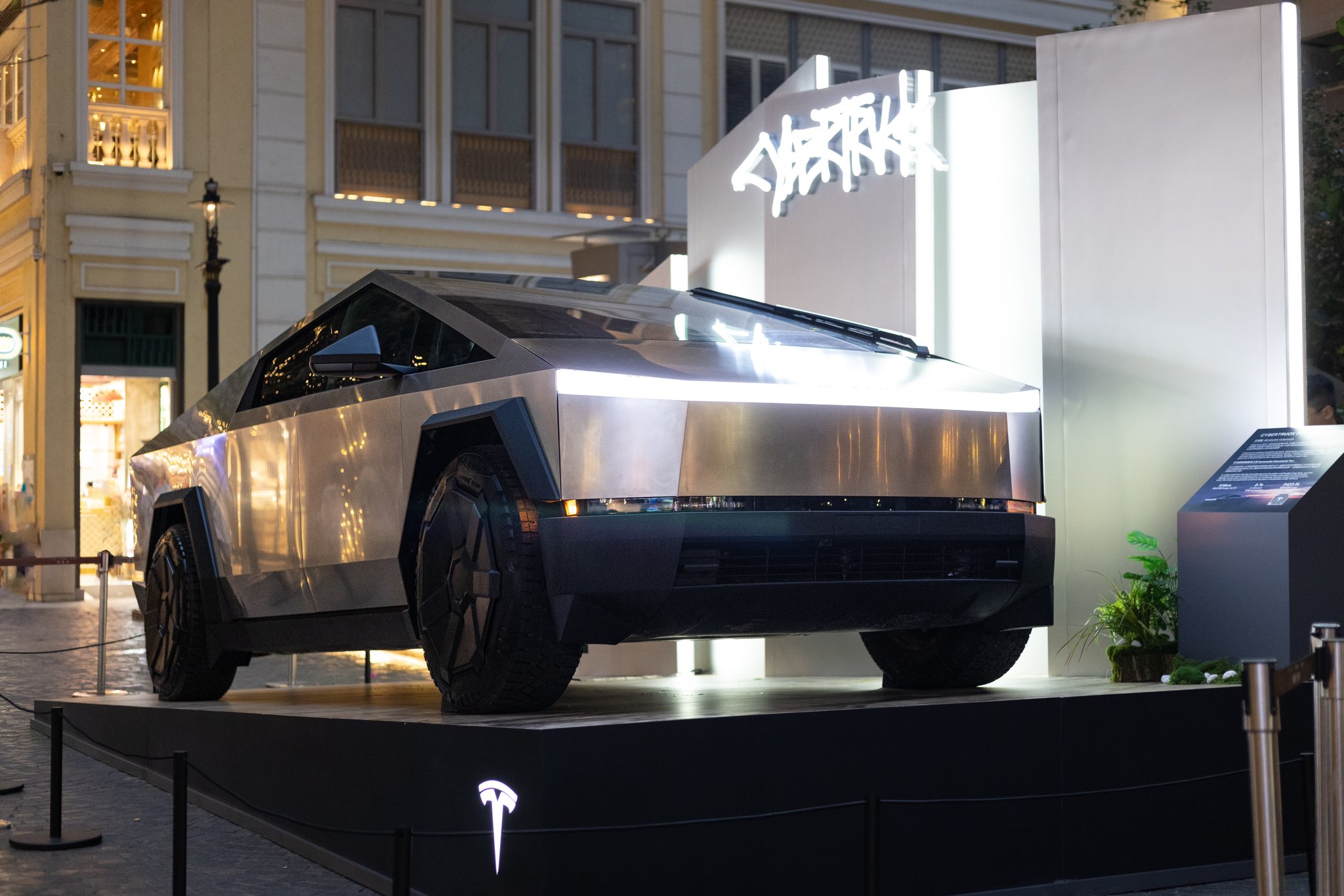
Elon Musk has seemingly confirmed that he will be sending a Tesla Cybertruck to 13-year-old Devarjaye “DJ” Daniel, a 13-year-old Houston boy fighting brain cancer. The teen was recognized as an honorary Secret Service member by U.S. President Donald Trump during his address to Congress on Tuesday.
A Chance Meeting
The Tesla CEO’s Cybertruck pledge was mentioned during DJ’s short interview with CNN’s Kaitlan Collins. When Collins asked the 13-year-old what he told the Tesla CEO, DJ answered that he asked for a Cybertruck.
“I said, ‘can you do me a big favor, when you get back to Houston can you send us a Cybertruck down there?’” the cancer fighter stated.
Daniel noted that Musk responded positively to his request, which was highlighted by Collins in a post on X. Musk responded to the post with a heart emoji, suggesting that he really will be sending a Cybertruck to the 13-year-old cancer fighter.
Teen’s Cancer Battle Inspires
Diagnosed in 2018 with a rare form of brain and spine cancer with no cure, Daniel has undergone 13 surgeries by the time he was 12. During his speech, Trump highlighted the 13-year-old’s long battle with his disease.
“Joining us in the gallery tonight is a young man who truly loves our police. The doctors gave him five months at most to live. That was more than six years ago. Since that time, DJ and his dad have been on a quest to make his dream come true,” Trump stated.
Daniels officially received an honorary badge from U.S. Secret Service Director Sean Curran, to much applause during the event.
Surprisingly Partisan
While Daniels’ story has been inspiring, Trump’s focus on the 13-year-old cancer fighter has received its own fair share of criticism. MSNBC host Nicolle Wallace, while referencing Daniels’ love for law enforcement, noted that she is hoping the 13-year-old never has to defend the U.S. capitol against Trump supporters. “If he does, I hope he isn’t one of the six who loses his life to suicide,” Wallace stated.
Anti-Musk and Trump accounts on X have also thrown jokes at the cancer fighter’s honorary badge, with some dubbing the 13-year-old as a “DEI hire” that should be looked into by DOGE.
Lifestyle
Tesla owner highlights underrated benefit of FSD Supervised
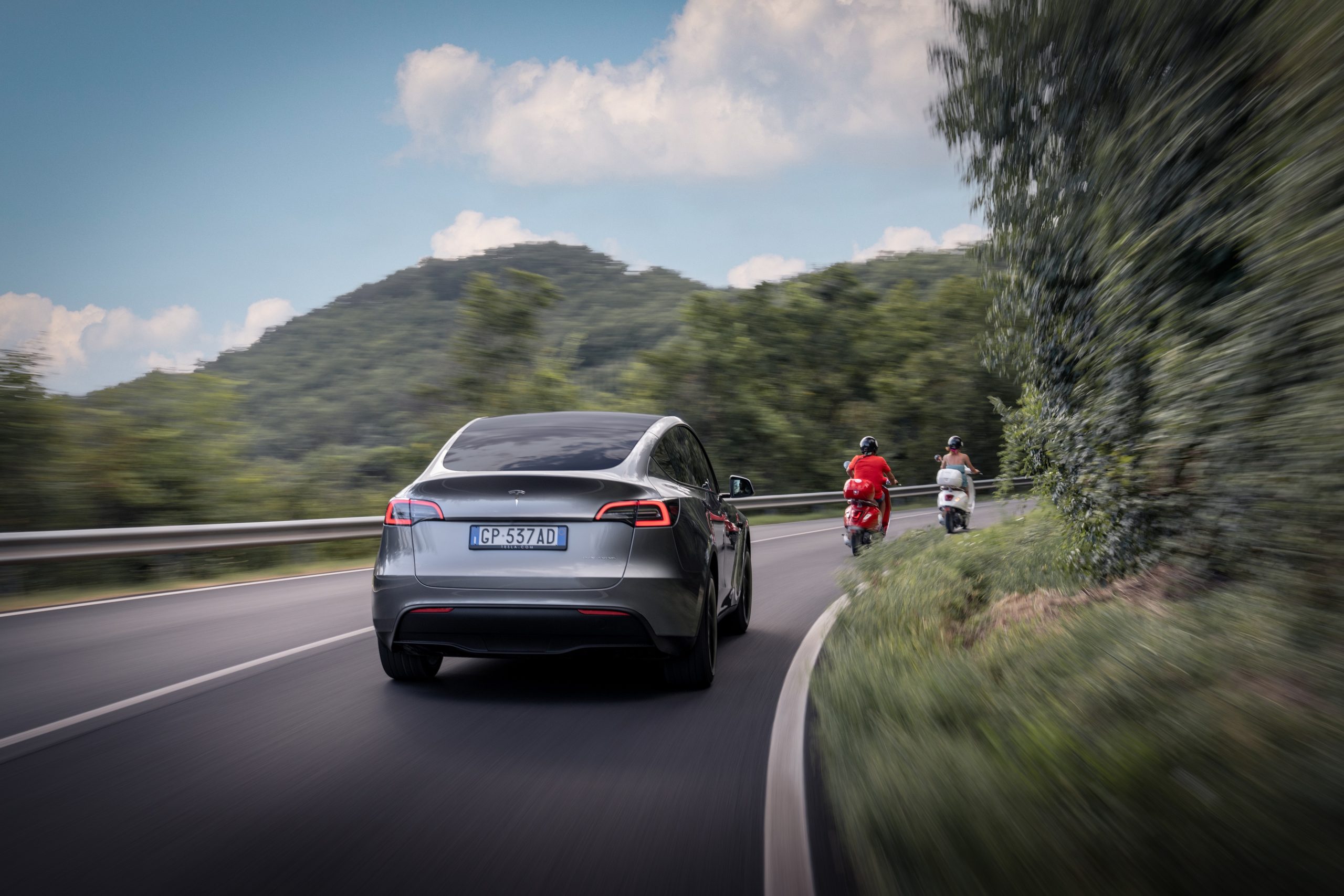
Elon Musk has been pretty open about the idea of FSD being the difference maker for Tesla’s future.
If Tesla succeeds in achieving FSD, it could become the world’s most valuable company. If it doesn’t, then the company would not be able to reach its optimum potential.
FSD Supervised’s safety benefits:
- But even if FSD is still not perfect today, FSD Supervised is already making a difference on the roads today.
- This was highlighted in Tesla’s Q4 2024 Vehicle Safety Report.
- As per Tesla, it recorded one crash for every 5.94 million miles driven in which drivers were using Autopilot technology.
- For comparison, the most recent data available from the NHTSA and FHWA (from 2023) showed that there was one automobile crash every 702,000 miles in the United States.
This morning, Tesla FSD proved to be an absolute godsend. I had to take my brother-in-law to the hospital in Sugar Land, TX, which is 40 miles away, at the ungodly hour of 4 AM. Both of us were exhausted, and he was understandably anxious about the surgery.
— JC Christopher (@JohnChr08117285) January 29, 2025
The convenience of…
FSD user’s tale:
- As per an FSD user’s post on social media platform X, FSD Supervised was able to help him drive a relative to a medical facility safely even if he was exhausted.
- During the trip, the driver only had to monitor FSD Supervised’s performance to make sure the Tesla operated safely.
- In a vehicle without FSD, such a trip with an exhausted driver would have been quite dangerous.
- “This morning, Tesla FSD proved to be an absolute godsend. I had to take my brother-in-law to the hospital in Sugar Land, TX, which is 40 miles away, at the ungodly hour of 4 AM. Both of us were exhausted, and he was understandably anxious about the surgery.
- “The convenience of sending the hospital’s address directly from my iPhone to my Tesla while still inside my house, then just a single button press once inside, and 40 miles later we were precisely in front of the hospital’s admissions area.This experience really underscores just how transformative this technology can be for society,” Tesla owner JC Christopher noted in his post.


Don’t hesitate to contact us with news tips. Just send a message to simon@teslarati.com to give us a heads up.
Lifestyle
Tesla Optimus “stars” in incredible fanmade action short film

There are few things that prove an enthusiast’s love towards a company more than a dedicated short film. This was highlighted recently when YouTube’s SoKrispyMedia posted a 10-minute action movie starring Optimus, Tesla’s humanoid robot, as well as several of the company’s most iconic products.
The video:
- Shot like a Hollywood action flick, the video featured a rather humorous plot involving a group of thieves that mistakenly targeted a Tesla Model 3 driver.
- The Model 3 driver then ended up speaking to Tesla for assistance, and some high-octane and high-speed hijinks ensued.
- While the short film featured several Tesla products like the Model 3, Superchargers, and the Cybertruck, it is Optimus that truly stole the show.
- Optimus served several roles in the short film, from an assistant in a Tesla office to a “robocop” enforcer that helped out the Model 3 driver.
Future Robo-cop @Tesla_Optimus
— SOKRISPYMEDIA (@sokrispymedia) January 12, 2025
full video: https://t.co/TXpSRhcP5K pic.twitter.com/YFHZ7siAP7
Cool inside jokes:
- The best Tesla videos are those that show an in-depth knowledge of the company, and SoKrispyMedia definitely had it.
- From the opening scenes alone, the video immediately poked fun at TSLA traders, the large number of gray Tesla owners, and the fact that many still do not understand Superchargers.
- The video even poked fun at Tesla’s software updates, as well as how some Tesla drivers use Autopilot or other features without reading the fine print in the company’s release notes.
- The video ended with a tour de force of references to Elon Musk products, from the Tesla Cybertruck to the Boring Company Not-a-Flamethrower, which was released back in 2018.
Check out SoKrispyMedia’s Tesla action short film in the video below.
Don’t hesitate to contact us with news tips. Just send a message to simon@teslarati.com to give us a heads up.
-

 News2 weeks ago
News2 weeks agoTesla celebrates key milestone for 4680 battery cell production cost
-
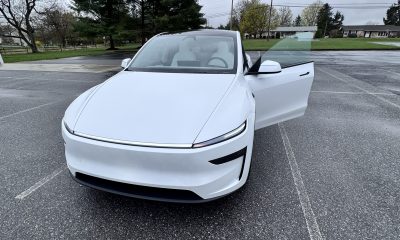
 News2 weeks ago
News2 weeks agoI took a Tesla new Model Y Demo Drive – Here’s what I learned
-

 News2 weeks ago
News2 weeks agoTesla’s Giga Texas vehicles now drive themselves to outbound lot
-

 News2 weeks ago
News2 weeks agoTesla’s ecological paradise near Giga Texas takes shape
-

 News2 weeks ago
News2 weeks agoElon Musk and top Trump trade advisor Peter Navarro lock horns over tariffs
-
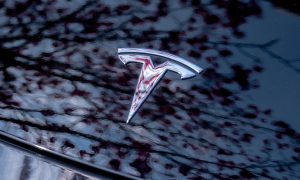
 News2 weeks ago
News2 weeks agoTesla bull lowers price target citing ‘brand crisis’
-
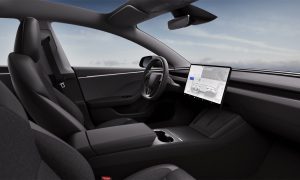
 News2 weeks ago
News2 weeks agoTesla adding new safety features for improved emergency detection
-
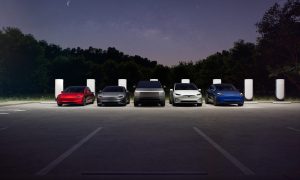
 News2 weeks ago
News2 weeks agoTesla rolls out latest Safety Score update—Here’s what’s new

